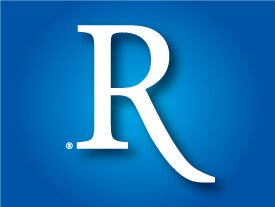Three Trends Shaping Race for Democratic Presidential Nomination
Surveys conducted last week identified three notable swings in the race for the Democratic Presidential nomination.

Surveys conducted last week identified three notable swings in the race for the Democratic Presidential nomination.

Arizona Senator John McCain has fallen nearly out of the top tier in the race for the Republican Presidential Nomination, but he’s still competitive in a general election match-up with Senator Hillary Clinton.

According to a recent Rasmussen Reports national telephone poll on last week's shooting of four people at a Cleveland school, 41% of Americans believe the incident could have been prevented.

Rasmussen Reports has just issued an important new analysis of data about attitudes toward the leading candidates for President that bears further discussion.

Now that he’s captured the Nobel Peace Prize in addition to his Oscar, 13% of American adults say it’s Very Likely that Al Gore will run for the White House in 2008.

Further evidence that voters might be starting to pay attention to Election 2008 is found in this month’s update on ideological perceptions of the Democratic candidates.

Early in Election 2008, Rasmussen Reports polling found that only Hillary Clinton and Newt Gingrich had more than 40% of voters committed to voting against them. By August, Gingrich was no longer a serious candidate. Only Mitt Romney and Clinton could count more than 40% of all voters in their core opposition.

Riding a crest in her political appeal, Senator Hillary Clinton now leads former New York Mayor Rudi Giuliani 48% to 41%. She also claims a stunning double-digit lead of 52% to 37% over former Senator Fred Thompson. Two weeks ago, Clinton led Giuliani by five and Thompson by eight. These results come at a time when 54% of Likely Voters express a favorable opinion of Clinton. That’s the highest level yet recorded for the former First Lady.

"It's the Economy Stupid" remains the manta of the electorate. To be sure, the electorate clearly wants the candidates for President and their elected officials to focus on economic concerns.

During Fred Thompson’s first month as a formal candidate for the Republican Presidential Nomination, Republican voters continue to see him as the most conservative candidate in the field.

Half of Americans support the notion of providing health care for free to all Americans even though they expect it will reduce the overall quality of care, increase the overall cost, and increase their personal costs.

Just 13% of American voters now say it’s Very Likely that Democrats will nominate a white male candidate for President.

It may be a long way away, but early indications are that a 2010 Senate race between incumbent Republican John McCain and Democratic Governor Janet Napolitano could be very competitive.

Rasmussen's recent polling suggests compellingly that the Democratic Party maintains an enormously strong advantage over the Republican on all of the indicators that are monitored monthly.

Forty-two percent (42%) of American voters believe that the United States tortures prisoners captured in the War on Terror.

A Rasmussen Reports national telephone survey found that 64% of Americans would like to see U.S. troops brought home from Iraq within a year.

The race for Wisconsin’s ten Electoral College votes was extraordinarily close in both Election 2000 and Election 2004.

A recently released poll by Rasmussen provides compelling evidence why President Bush used his Saturday radio address to indicate he is prepared to compromise with Congress on funding the State's Children Health Insurance Program.

In the first few months of 2007, Barack Obama burst onto the national political scene and quickly took hold of the number two slot in the race for the Democratic Presidential Nomination.

A look at the past three weeks of polling shows clear trends in the race for the GOP nomination but the meaning of those trends is less clear.